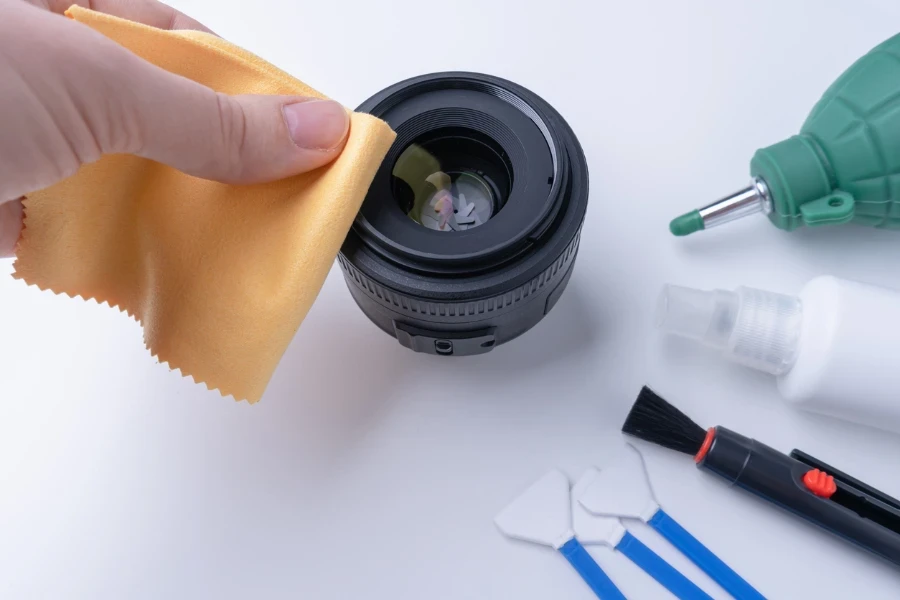In the ever-evolving world of consumer electronics, cleaners have undergone a remarkable transformation. From bulky, manual devices to sleek, efficient machines, the latest advancements in electronic cleaners are designed to make your cleaning tasks easier and more effective. This article explores the ins and outs of these revolutionary gadgets, offering insights on their operation, benefits, drawbacks, and tips for selecting and using them.
Table of Contents:
– What is an electronic cleaner?
– How does an electronic cleaner work?
– Benefits and drawbacks of electronic cleaners
– How to choose an electronic cleaner
– How to use an electronic cleaner
What is an electronic cleaner?

Electronic cleaners are sophisticated devices that leverage modern technology to clean various surfaces, objects, or spaces. Unlike traditional cleaning tools that often require manual exertion, these gadgets offer automated or semi-automated solutions, harnessing power sources and innovative mechanisms to accomplish cleaning tasks with minimal human intervention. From ultrasonic cleaners that remove dirt and grime at the microscopic level to robotic vacuum cleaners that autonomously navigate your home, the category of electronic cleaners encompasses a wide range of products designed for specific or general cleaning purposes.
How does an electronic cleaner work?

The operation of an electronic cleaner depends on its specific type and intended use. For instance, ultrasonic cleaners generate high-frequency sound waves that create cavitation bubbles in a liquid medium, which violently collapse and dislodge contaminants from objects submerged in the cleaning solution. On the other hand, robotic vacuum cleaners use sensors and algorithms to map out spaces, detect obstacles, and clean floors efficiently. These devices often incorporate filters, brushes, and suction mechanisms to capture dirt, dust, and debris, ensuring a thorough cleaning process. The underlying technology in each electronic cleaner is tailored to optimize performance, efficiency, and user convenience.
Benefits and drawbacks of electronic cleaners

Electronic cleaners offer numerous advantages, including time savings, improved cleaning efficiency, and enhanced user convenience. By automating or simplifying cleaning tasks, these devices allow users to focus on other activities, making them ideal for busy individuals or those with mobility issues. Furthermore, the precision and thoroughness of electronic cleaners often surpass manual cleaning methods, providing superior results in many cases. However, there are also drawbacks to consider. The initial cost of electronic cleaners can be high, and they may require regular maintenance or replacement parts. Additionally, their effectiveness can vary based on the model and the specific cleaning task, leading to mixed experiences among users.
How to choose an electronic cleaner

Selecting the right electronic cleaner requires careful consideration of several factors. First, identify the primary purpose of the cleaner—whether it’s for floor cleaning, upholstery, or specialized tasks like jewelry or eyeglass cleaning. This will narrow down the options to devices designed for those specific needs. Next, consider the size of the area or the volume of items you plan to clean, as this will influence the required capacity and power of the device. User reviews and ratings can provide valuable insights into the performance and reliability of different models. Additionally, evaluate the ease of use, maintenance requirements, and availability of replacement parts or accessories, as these aspects will impact the long-term satisfaction and cost-effectiveness of your purchase.
How to use an electronic cleaner

Using an electronic cleaner effectively often involves more than simply turning on the device. Begin by carefully reading the user manual to understand the specific features, capabilities, and safety precautions of your cleaner. Prepare the area or items to be cleaned according to the manufacturer’s instructions, which may include removing large debris or pre-treating stains. For devices like robotic vacuums, ensure the cleaning path is free of obstacles that could hinder performance. Regular maintenance, such as cleaning filters, emptying dustbins, or replacing worn parts, is crucial to keep the device functioning properly and extend its lifespan. By following these guidelines, you can maximize the benefits and efficiency of your electronic cleaner.
Conclusion
Electronic cleaners represent a significant advancement in the realm of cleaning technology, offering a blend of convenience, efficiency, and effectiveness. By understanding how these devices work, their benefits and drawbacks, and the factors to consider when choosing and using them, consumers can make informed decisions that enhance their cleaning routines. As the technology continues to evolve, the potential for even more innovative and powerful cleaning solutions remains vast, promising a future where cleaning tasks are less burdensome and more seamlessly integrated into our daily lives.




